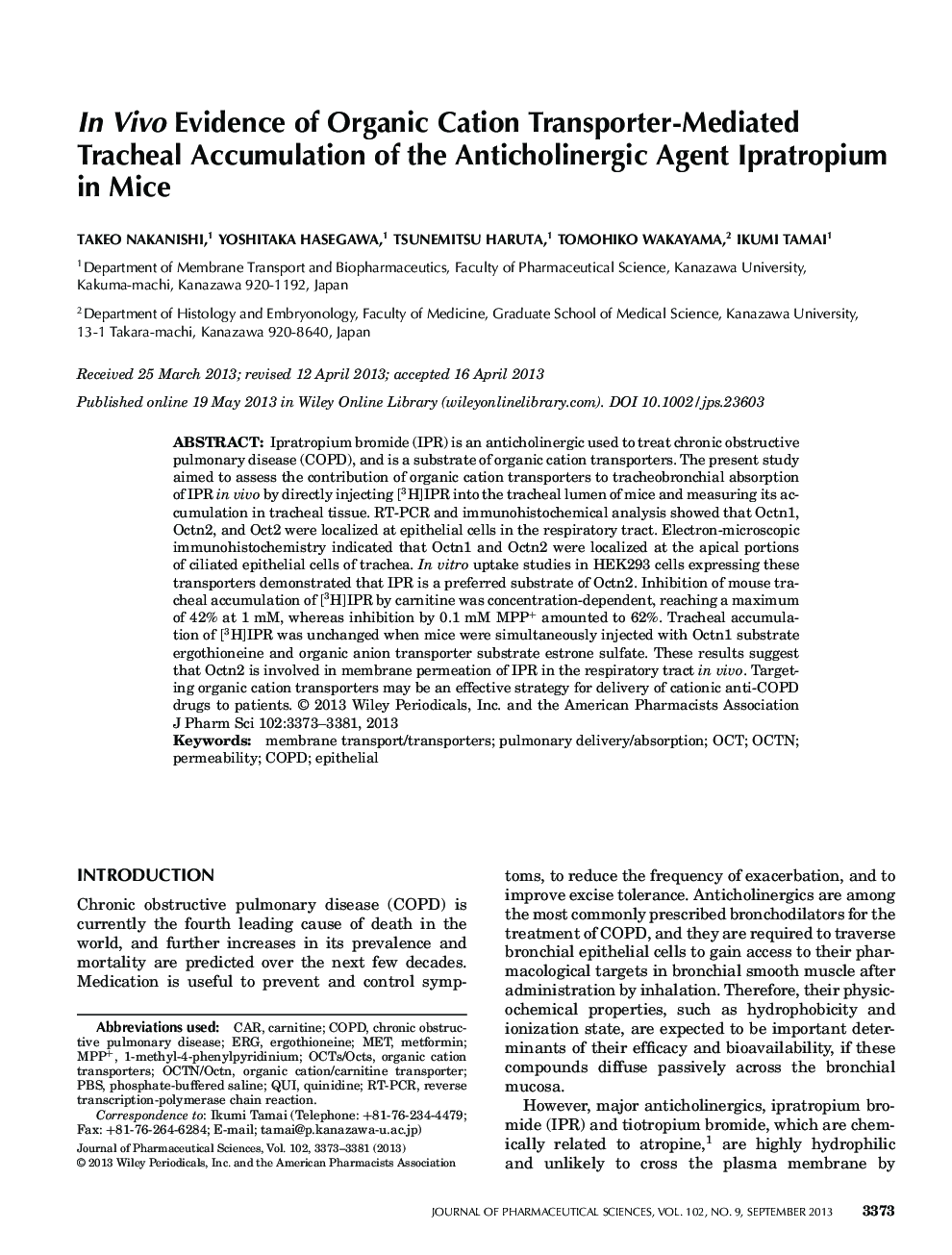| Article ID | Journal | Published Year | Pages | File Type |
|---|---|---|---|---|
| 2484850 | Journal of Pharmaceutical Sciences | 2013 | 9 Pages |
ABSTRACTIpratropium bromide (IPR) is an anticholinergic used to treat chronic obstructive pulmonary disease (COPD), and is a substrate of organic cation transporters. The present study aimed to assess the contribution of organic cation transporters to tracheobronchial absorption of IPR in vivo by directly injecting [3H]IPR into the tracheal lumen of mice and measuring its accumulation in tracheal tissue. RT-PCR and immunohistochemical analysis showed that Octnl, Octn2, and Oct2 were localized at epithelial cells in the respiratory tract. Electron-microscopic immunohistochemistry indicated that Octnl and Octn2 were localized at the apical portions of ciliated epithelial cells of trachea. In vitro uptake studies in HEK293 cells expressing these transporters demonstrated that IPR is a preferred substrate of Octn2. Inhibition of mouse tracheal accumulation of [3H]IPR by carnitine was concentration-dependent, reaching a maximum of 42% at 1 mM, whereas inhibition by 0.1 mM MPP + amounted to 62%. Tracheal accumulation of [3H]IPR was unchanged when mice were simultaneously injected with Octnl substrate ergothioneine and organic anion transporter substrate estrone sulfate. These results suggest that Octn2 is involved in membrane permeation of IPR in the respiratory tract in vivo. Targeting organic cation transporters may be an effective strategy for delivery of cationic anti-COPD drugs to patients.
